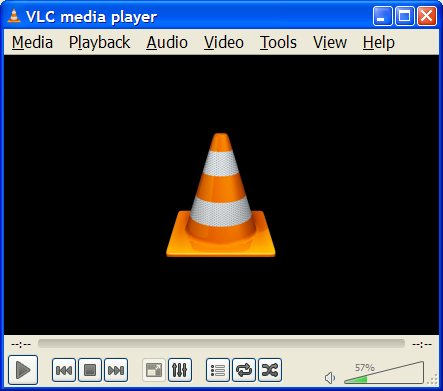Difference between revisions of "Documentation:History"
m (Fix image) |
|||
| (38 intermediate revisions by 10 users not shown) | |||
| Line 1: | Line 1: | ||
| − | {{RightMenu| | + | {{RightMenu|Documentation TOC}} |
| − | |||
| − | == | + | == Overview of the VideoLAN project == |
| + | VideoLAN was a complete software solution for video streaming and playback, developed by students of the [http://www.ecp.fr Ecole Centrale Paris] and developers from all over the world, under the [https://www.gnu.org/copyleft/gpl.html GNU General Public License] (GPL). | ||
| − | VLC has | + | Originally VideoLAN was designed to stream MPEG videos on high-bandwidth networks, but VideoLAN's main software, VLC media player, has evolved to become a full-featured, cross-platform media player. |
| − | |||
| − | |||
| − | |||
| − | + | Now the Non-Profit Organisation developing and offering the VLC media player is called: VideoLAN Organisation | |
| − | + | More details about the project can be found on the [https://www.videolan.org/ VideoLAN Web site]. | |
| − | + | == VLC Media Player == | |
| + | [[File:Interface 2.PNG|thumb|left|194x150px|[[VLC]] 2.0 default interface, [[Windows]]]] | ||
| + | Originally called ''VideoLAN Client'', VLC media player is VideoLAN's main software product. | ||
| − | + | VLC media player works on many platforms: Linux, Windows, macOS, BeOS, BSD, Solaris, Android, iOS, QNX and many more... | |
| + | It supports the following video and audio formats: MPEG-1, MPEG-2, MPEG-4/DivX, h264, webm, mkv, DVDs, VCDs, Audio CDs, wmv and wma. | ||
| + | {{Clear|left}} | ||
| − | + | It can also play from external sources: | |
| + | * Satellite. | ||
| + | * Cable. | ||
| + | * Digital TV cards (DVB-S, DVB-T). | ||
| + | * Several types of network streams: UDP/RTP Unicast, UDP/RTP Multicast, HTTP, RTSP, MMS, etc. | ||
| + | * Acquisition or encoding cards. | ||
| + | * Webcams and other devices. | ||
| − | + | VLC can also be used as a streaming server. This feature is described in the [[Documentation:Streaming HowTo|Streaming HowTo]]. | |
| − | + | This guide describes all the playback (client) aspects of VLC media player. | |
| − | |||
| − | |||
| − | |||
| − | |||
| − | |||
| − | |||
| − | |||
| − | |||
| − | |||
| − | |||
| − | |||
| − | |||
| − | |||
| − | |||
| − | |||
| − | |||
| − | |||
| − | |||
| − | |||
| − | |||
| − | |||
| − | |||
| − | |||
| − | |||
| − | |||
| − | |||
| − | |||
| − | |||
| − | |||
| − | |||
{{Documentation}} | {{Documentation}} | ||
Latest revision as of 08:18, 11 February 2019
Overview of the VideoLAN project
VideoLAN was a complete software solution for video streaming and playback, developed by students of the Ecole Centrale Paris and developers from all over the world, under the GNU General Public License (GPL).
Originally VideoLAN was designed to stream MPEG videos on high-bandwidth networks, but VideoLAN's main software, VLC media player, has evolved to become a full-featured, cross-platform media player.
Now the Non-Profit Organisation developing and offering the VLC media player is called: VideoLAN Organisation
More details about the project can be found on the VideoLAN Web site.
VLC Media Player
Originally called VideoLAN Client, VLC media player is VideoLAN's main software product.
VLC media player works on many platforms: Linux, Windows, macOS, BeOS, BSD, Solaris, Android, iOS, QNX and many more... It supports the following video and audio formats: MPEG-1, MPEG-2, MPEG-4/DivX, h264, webm, mkv, DVDs, VCDs, Audio CDs, wmv and wma.
It can also play from external sources:
- Satellite.
- Cable.
- Digital TV cards (DVB-S, DVB-T).
- Several types of network streams: UDP/RTP Unicast, UDP/RTP Multicast, HTTP, RTSP, MMS, etc.
- Acquisition or encoding cards.
- Webcams and other devices.
VLC can also be used as a streaming server. This feature is described in the Streaming HowTo.
This guide describes all the playback (client) aspects of VLC media player.
Please read the Documentation Editing Guidelines before you edit the documentation
